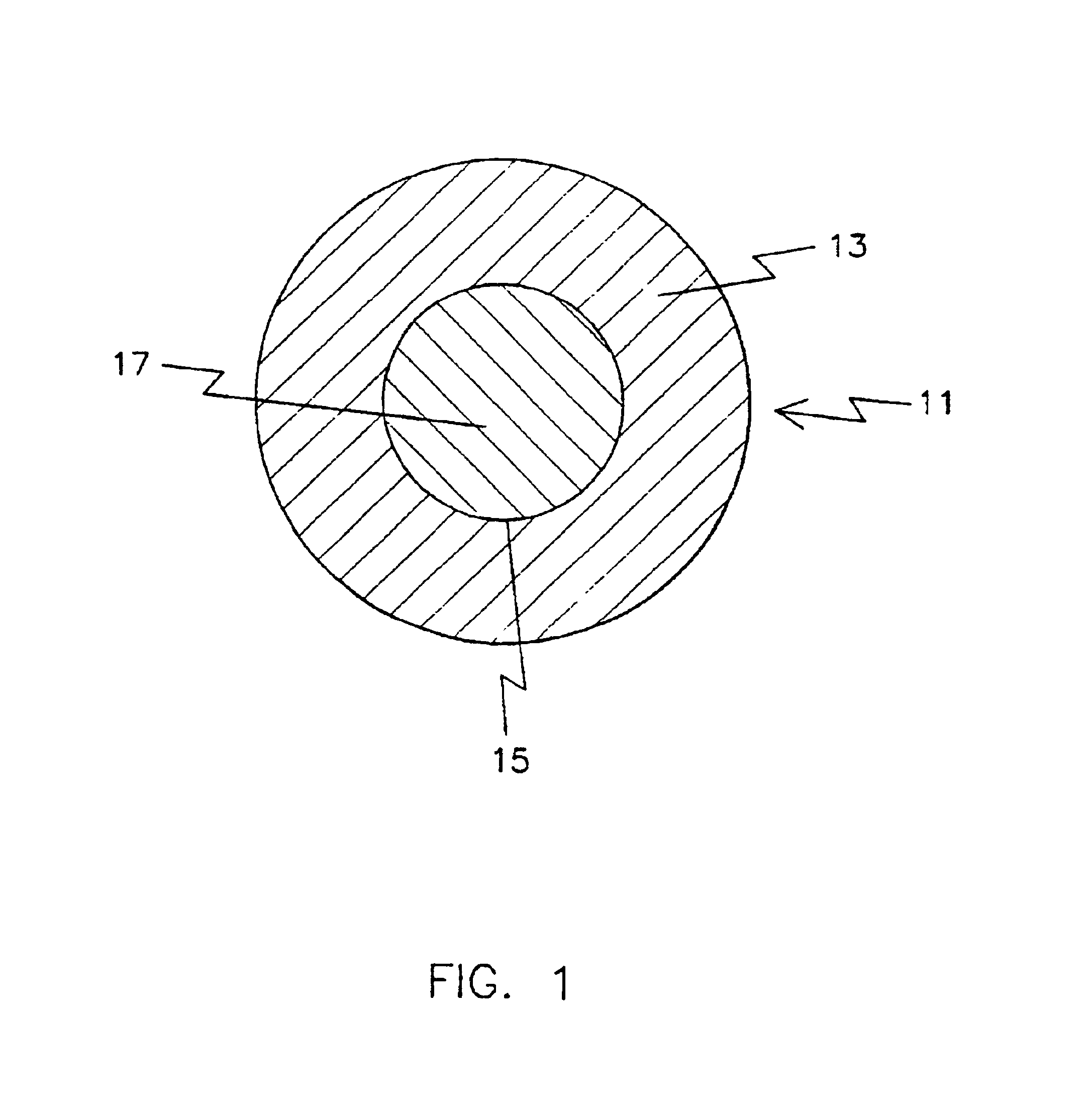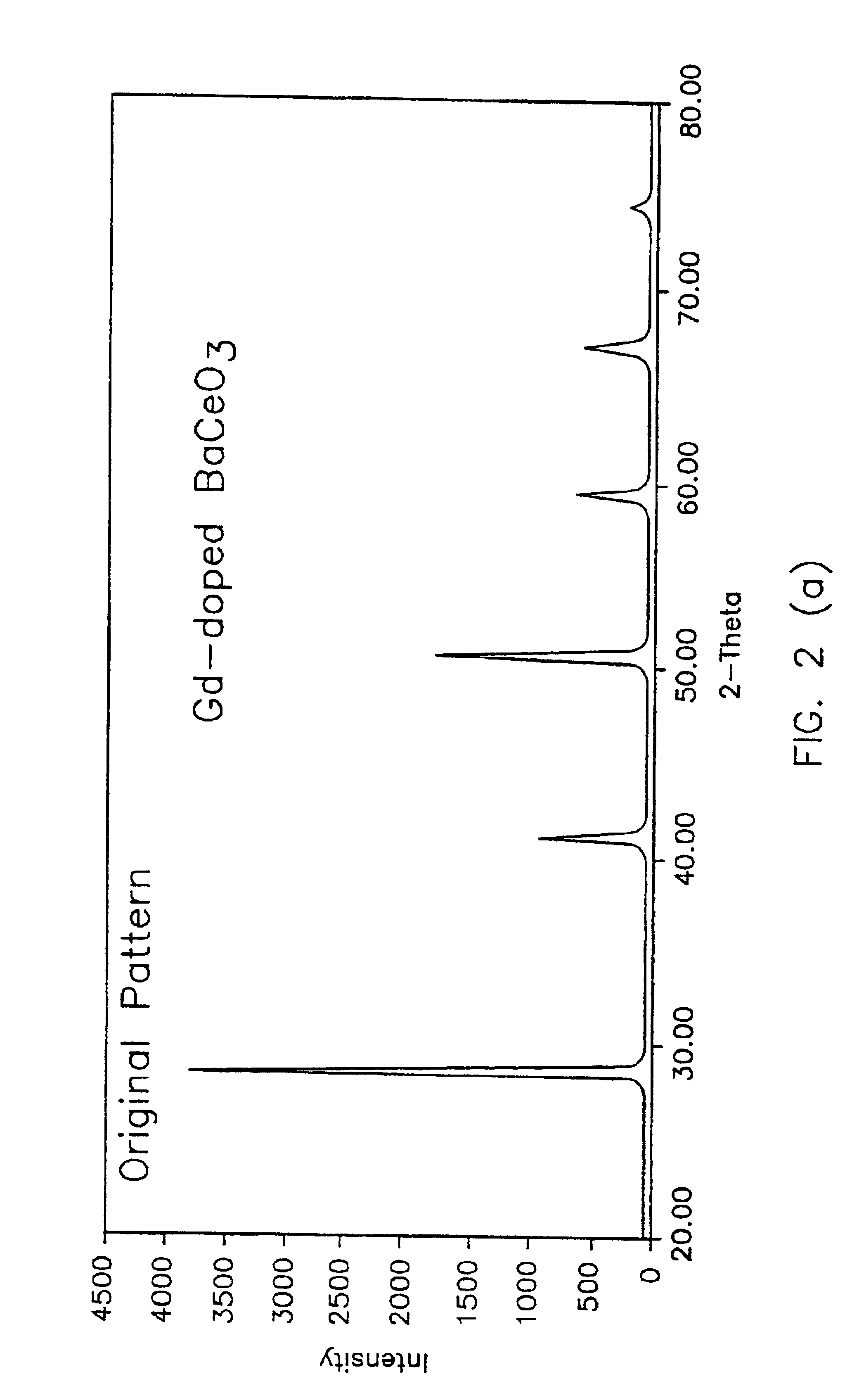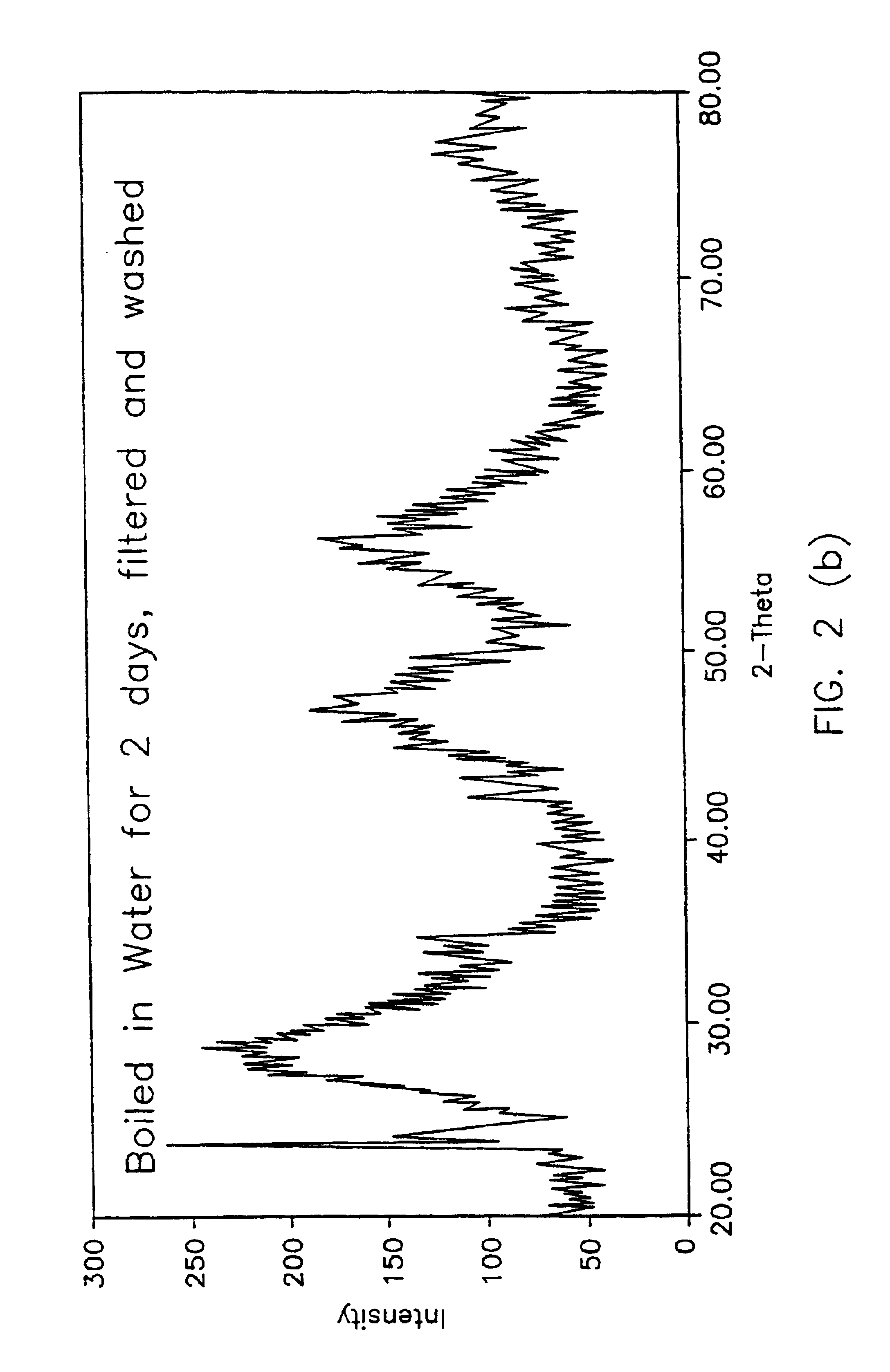Molecular decomposition process for the synthesis of nanosize ceramic and metallic powders
a nano-sized ceramic and metallic powder technology, applied in the direction of chromium oxides/hydrates, lanthanide oxides/hydroxides, niobium compounds, etc., can solve the problems of large nano-sized powder quantities, inability to manufacture nano-sized powders in large quantities, and precise and difficult control of the reaction system. achieve the effect of easy industrial application
- Summary
- Abstract
- Description
- Claims
- Application Information
AI Technical Summary
Benefits of technology
Problems solved by technology
Method used
Image
Examples
example i
Synthesis of Nanosize CeO.sub.2
The starting precursor may be one of the alkaline earth cerates, such as BaCeO.sub.3. At room temperature, the standard free energy for the reaction
BaCeO.sub.3 +H.sub.2 O.fwdarw.Ba(OH).sub.2 +CeO.sub.2
is -189.79 kJ / mol. indicating that this reaction is favored. The volume of CeO.sub.2 per molecule is .about.77 .ANG..sup.3 and the linear dimension is (cube root of the volume) 4.25 .ANG.. The volume per molecule of BaCeO.sub.3 is .about.85 .ANG..sup.3 and the linear dimension is 4.4 .ANG.. Thus, if BaO is leached out as Ba(OH).sub.2, the change in volume for the original BaCeO.sub.3 is ((85-77) / 85).times.100 or 9.4%, or the change in linear dimension is ((4.4-4.25) / 4.4).times.100 or 3.4%. FIG. 1 shows a schematic of a particle 11 reacting with H.sub.2 O to form Ba(OH).sub.2. The Ba(OH).sub.2 formed dissolves into water thus leaving a porous layer 13 of CeO.sub.2. The volume percent porosity in the layer is expected to be about 9.4%. The fact that BaCeO.s...
example ii
Synthesis of Nanosize ZrO.sub.2
The starting precursor may be a suitable alkali or alkaline earth zirconate. In the preliminary work, Na.sub.2 ZrO.sub.3 was used as the precursor. This was simply boiled in water for a few minutes. The reaction is
Na.sub.2 ZrO.sub.3 +H.sub.2 O.fwdarw.Zro.sub.2 +2NaOH
No thermodynamic data are available. However, preliminary experimental work, results of which are described below, shows that the above reaction is indeed favored.
Powder of Na.sub.3 ZrO.sub.3 was purchased from a commercial vendor. Approximately 10 gms. of the powder was boiled in water for ten minutes. The residue was filtered, washed, and dried. The residue was subsequently examined by X-ray diffraction (XRD) with CuK.alpha. radiation. The residue was then subjected to a number of thermal treatments. The following are the results of this experiment.
FIG. 3(a) is an XRD trace of the as-received Na.sub.2 ZrO.sub.3 powder. Sharp peaks indicate a relatively coarse (at least a few tenths of a m...
example iii
Synthesis of Nanosize Metallic Powders
The present invention should also be useful for the synthesis of nanosize metallic powders, provided suitable intermetallic compounds can be used as precursors. There are numerous binary and ternary intermetallic compounds which may be used as precursors. As an example, for the synthesis of nanosize Pd, a possible precursor is BaPd which is an intermetallic line compound. The possible approach would consist of first fabricating BaPd by a conventional metallurgical process and then reacting it with an acid, e.g., HCl acid. It is readily shown that the .DELTA.G.degree. for the reaction,
BaCl.sub.2 +Pd.fwdarw.Ba+PdCl.sub.2
is positive suggesting that the first compound to form will be BaCl.sub.2. The BaCl.sub.2 formed will dissolve into water thus forming nanosize Pd powder. The so-formed Pd powder should be nanosize and continue to remain nanosize since Pd has a negligible solubility in water. Thus, as long as the concentration of HCl is low, and th...
PUM
| Property | Measurement | Unit |
|---|---|---|
| porosity | aaaaa | aaaaa |
| non-soluble | aaaaa | aaaaa |
| composition | aaaaa | aaaaa |
Abstract
Description
Claims
Application Information
 Login to View More
Login to View More - R&D
- Intellectual Property
- Life Sciences
- Materials
- Tech Scout
- Unparalleled Data Quality
- Higher Quality Content
- 60% Fewer Hallucinations
Browse by: Latest US Patents, China's latest patents, Technical Efficacy Thesaurus, Application Domain, Technology Topic, Popular Technical Reports.
© 2025 PatSnap. All rights reserved.Legal|Privacy policy|Modern Slavery Act Transparency Statement|Sitemap|About US| Contact US: help@patsnap.com



